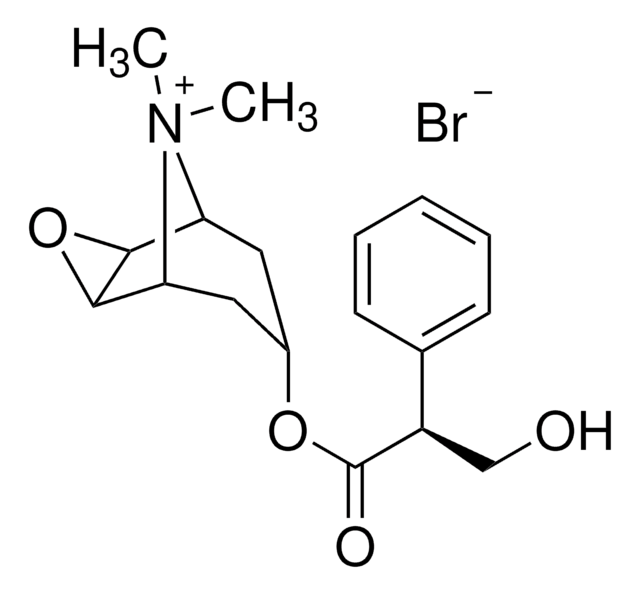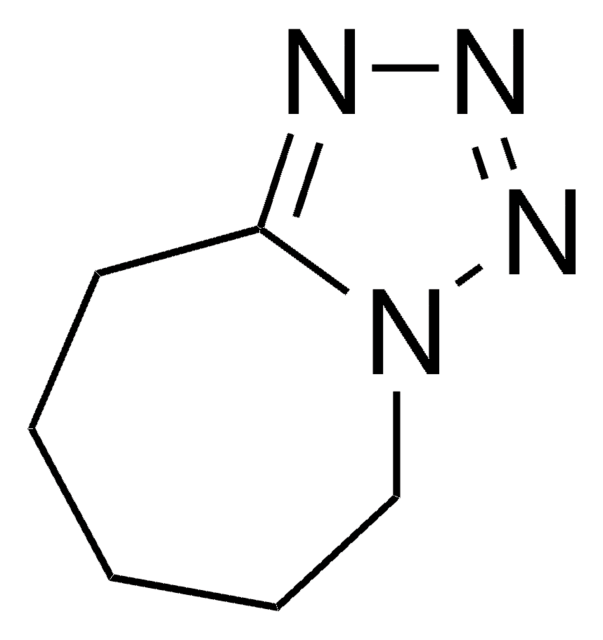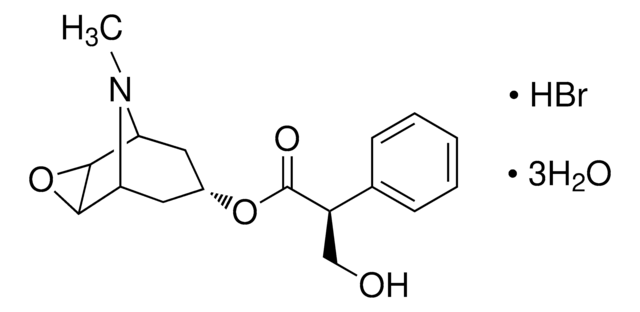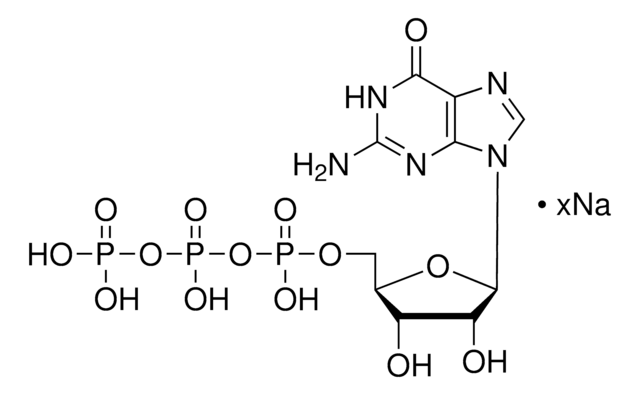S2250
(−)Scopolamine methyl nitrate
Synonym(s):
Hyoscine methyl nitrate, Methscopolamine nitrate
About This Item
Recommended Products
solubility
water, high purity: 50 mg/ml
SMILES string
[O-][N+]([O-])=O.C[N+]1(C)C2CC(CC1C3OC23)OC(=O)[C@H](CO)c4ccccc4
InChI
1S/C18H24NO4.NO3/c1-19(2)14-8-12(9-15(19)17-16(14)23-17)22-18(21)13(10-20)11-6-4-3-5-7-11;2-1(3)4/h3-7,12-17,20H,8-10H2,1-2H3;/q+1;-1/t12?,13-,14?,15?,16?,17?;/m1./s1
InChI key
BSQIVYOSLFLSGE-UXXRHRDBSA-N
Gene Information
human ... CHRM1(1128) , CHRM2(1129) , CHRM3(1131) , CHRM4(1132) , CHRM5(1133)
Application
Biochem/physiol Actions
signalword
Danger
hcodes
Hazard Classifications
Acute Tox. 1 Dermal - Acute Tox. 2 Inhalation - Acute Tox. 2 Oral
Storage Class
6.1A - Combustible acute toxic Cat. 1 and 2 / very toxic hazardous materials
wgk_germany
WGK 3
flash_point_f
Not applicable
flash_point_c
Not applicable
Certificates of Analysis (COA)
Search for Certificates of Analysis (COA) by entering the products Lot/Batch Number. Lot and Batch Numbers can be found on a product’s label following the words ‘Lot’ or ‘Batch’.
Already Own This Product?
Find documentation for the products that you have recently purchased in the Document Library.
Our team of scientists has experience in all areas of research including Life Science, Material Science, Chemical Synthesis, Chromatography, Analytical and many others.
Contact Technical Service








